#Jupiter moon
Explore tagged Tumblr posts
Text
The Juno spacecraft made a recent flyby of Jupiter and some of the photos it captured are absolutely gorgeous! Here are a few NEW photos. We will add more photos to this post.
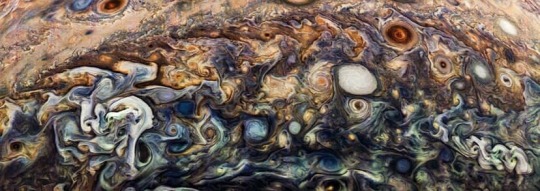
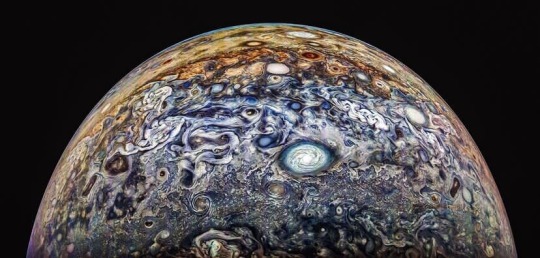
#jupiter moon#planet jupiter#jupiter moons#jupiter planet#astronomy#nasa#astronomers#universe#nasa photos#astrophotography#outer space#astrophysics#nasawebb#hubble space telescope#jupiter#sky#our universe#the universe#space travel#space science#space exploration#international space station#space#juno spacecraft#nasa science#science facts#planetary science#astronomy facts#astrography#science
787 notes
·
View notes
Text
CAN HUMANS LIVE ON JUPITER'S MOON, EUROPA??
Blog#442
Saturday, October 5th, 2024.
Welcome back,
Life is abundant on Earth, but we haven’t yet found it anywhere else in the universe. How do we search for life beyond our home planet? Scientists say we should look for three key ingredients that make life possible: liquid water, chemistry, and energy. Also, life takes time to develop. We should look for life on worlds where sufficient time has passed for life to get started.
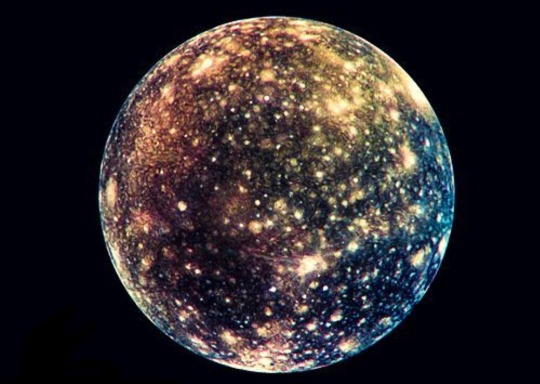
Jupiter’s icy moon Europa may have these essential ingredients and is as old as Earth. NASA is sending the Europa Clipper spacecraft to conduct a detailed exploration of Europa and investigate whether the icy moon, with its subsurface ocean, has the capability to support life. Understanding Europa’s habitability will help scientists better understand the potential for finding life beyond our planet and guide us in our search.
Astrobiology is the study of the origin, evolution, and distribution of life in the universe.
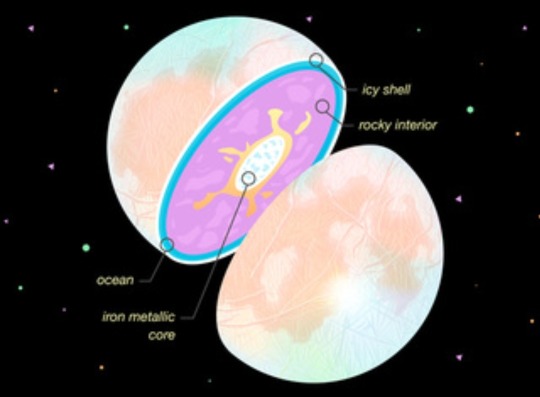
This multidisciplinary field investigates the extremes of life on Earth to inform its search for life in the universe. It encompasses characterizing habitable environments in preparation to search for life.
Liquid water tops the list of ingredients for life, and Europa has lots of it. Scientists think Europa has a salty ocean beneath its icy crust with about twice as much water than all of Earth's oceans combined. Water dissolves nutrients for organisms to eat, transports important chemicals within living cells, supports metabolism, and allows those cells to get rid of waste. Scientists are confident there's a rocky seafloor at the bottom of Europa’s ocean.
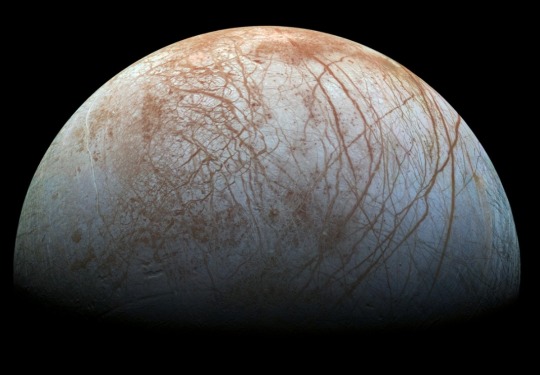
Hydrothermal activity could possibly supply chemical nutrients that could support living organisms.
The best evidence that there's an ocean at Europa was gathered by NASA's Galileo spacecraft, which orbited Jupiter from 1995 to 2003. While Europa has no magnetic field of its own, when the Galileo spacecraft made 12 close flybys of Europa, its magnetometer detected a magnetic field within Europa as Jupiter's powerful magnetic field swept past the moon. Scientists think the most likely cause of this magnetic signature is a global ocean of salty water.
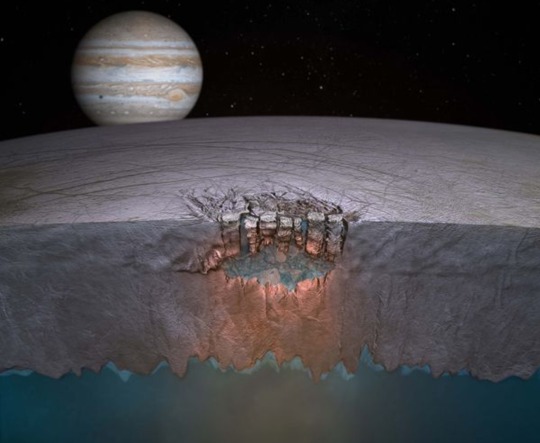
Europa's bright, icy surface is unlike anything seen on Earth. It’s the smoothest body in the solar system, with few towering mountains or deep basins. Ridges and grooves crisscross the surface, breaking up the landscape. Many of these features coincide with long, curving streaks that are dark and reddish in color – some stretching across the surface in great arcs over 600 miles (1,000 kilometers) long. Elsewhere, domes, pits, and jumbles of icy blocks hint that warm ice may be rising from deep below.
Along with water, life as we know it also needs certain chemical elements – the building blocks of life – including carbon, hydrogen, nitrogen, oxygen, phosphorus, and sulfur. These elements are common in the universe and make up 98% of living matter on Earth by combining to form organic molecules essential to life.
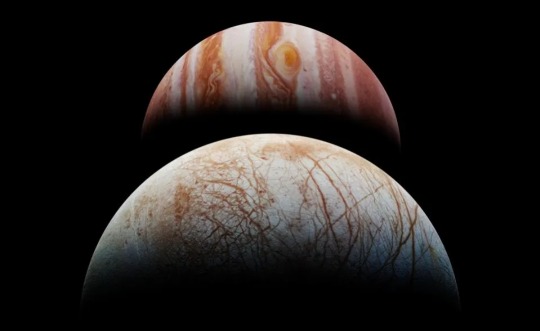
Scientists think these elements were likely incorporated into Europa as the moon formed. Later, asteroids and comets collided with the moon and may have left more organic materials.
The third ingredient for life is energy. All lifeforms need energy to survive. On Earth, most of that energy comes from the Sun. For example, plants grow and thrive through photosynthesis, a process that converts sunlight into energy. The energy is transferred to humans, animals, and other organisms when the plants are eaten.
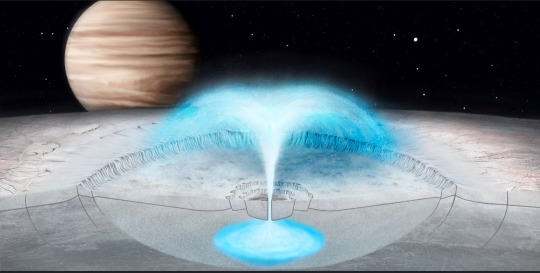
But the type of life that might inhabit Europa likely would be powered purely by chemical reactions instead of by photosynthesis, because any life at Europa would exist beneath the ice, where there is no sunlight.
Europa's surface is blasted by radiation from Jupiter. That's a bad thing for life on the surface – it couldn't survive. But the radiation may create fuel for life in an ocean below the surface.
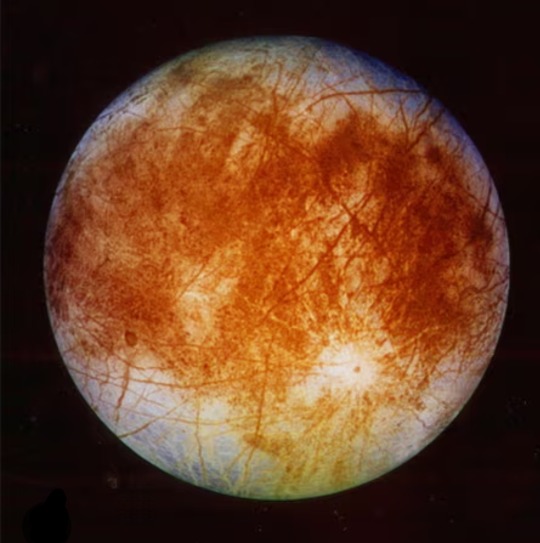
The radiation splits apart water molecules (H2O, made of oxygen and hydrogen) in Europa's extremely tenuous atmosphere. The hydrogen floats away and much of the oxygen stays behind and may bind to other elements. Oxygen is a very reactive element, which means it could potentially be used in chemical reactions that release energy. If the oxygen somehow makes its way to the ocean, it could react with other chemicals to possibly provide chemical energy for microbial life.
Originally published on https://europa.nasa.gov
COMING UP!!
(Wednesday, October 9th, 2024)
"WHAT IS 'NEGATIVE TIME'??"
#astronomy#outer space#alternate universe#astrophysics#universe#spacecraft#white universe#space#parallel universe#astrophotography#jupiter moon#europa
93 notes
·
View notes
Text

Early Morning Skies...
Source Me laf@ilyF 🥰
#original photographers#colors#artists on tumblr#oklahoma#my photos#my photgraphy#my escape#photographers on tumblr#nature#sky#black#clouds#Jupiter moon#saturn#after the rains#good morning#landscape photography
86 notes
·
View notes
Text
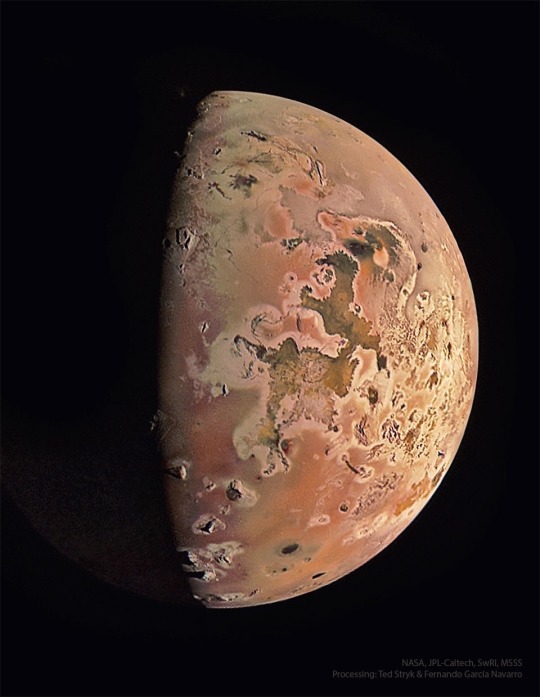
Boom!! There goes another one! One of Jupiters many moons, Io, is about the size of Earth's moon, but its surface is full of volcanic activity. This is due to gravitational flexing by Jupiter and other moons. The process heats the moons interior, covering the surface with volcanoes. The featured image is from NASA’s robotic June spacecrafts fly by last week, passing within 12,000 kilometers above the dangerously active world. The surface of Io is covered with sulfur and frozen sulfur dioxide, making it appear yellow, orange and brown. As hoped, Juno flew by just as a volcano was erupting -- with its faint plume visible near the top of the featured image. Studying Io's volcanoes and plumes helps scientists better understand how Jupiter's complex system of moons, rings, and auroras interact. Juno is scheduled to make two flybys of Io during the coming months that are almost 10 times closer: one in December and another in February 2024.
Image credit: NASA
#astronomy#space#science#universe#moon#jupiter#io#jupiter moon#volcano#volcanic activity#erupt#eruption#sulfur#surface#mystery#dangerous#follow#like#reblog#thefirststar#thefirststarr#the first star#the first starr#blog#tumblr#space blog#cool#pretty#colours#wow
98 notes
·
View notes
Text
Liftoff!!! Europa Clipper is Away! 🛰️

NASA’s Europa Clipper has embarked on its long voyage to Jupiter, where it will investigate Europa, a moon with an enormous subsurface ocean that may have conditions to support life. The spacecraft launched at 12:06 p.m. EDT Monday aboard a SpaceX Falcon Heavy rocket from Launch Pad 39A at NASA’s Kennedy Space Center in Florida.
The largest spacecraft NASA ever built for a mission headed to another planet, Europa Clipper also is the first NASA mission dedicated to studying an ocean world beyond Earth. The spacecraft will travel 1.8 billion miles (2.9 billion kilometers) on a trajectory that will leverage the power of gravity assists, first to Mars in four months and then back to Earth for another gravity assist flyby in 2026. After it begins orbiting Jupiter in April 2030, the spacecraft will fly past Europa 49 times.
In 2031, the spacecraft will begin conducting its science-dedicated flybys of Europa. Coming as close as 16 miles (25 kilometers) to the surface, Europa Clipper is equipped with nine science instruments and a gravity experiment, including an ice-penetrating radar, cameras, and a thermal instrument to look for areas of warmer ice and any recent eruptions of water. As the most sophisticated suite of science instruments NASA has ever sent to Jupiter, they will work in concert to learn more about the moon’s icy shell, thin atmosphere, and deep interior.
Read more:
12 notes
·
View notes
Text



jupiter's moons
callisto taken by voyager 2 in 1979 - source ganymede taken by voyager 2 in 1979 - source europa taken by voyager 2 in 1979 - source
100 notes
·
View notes
Text
Finding out how are some of Jupiter's moons named could rub you in a wrong way.





5 notes
·
View notes
Text




#sailor moon#my gifs#sm#smss#sailor mercury#sailor mars#sailor jupiter#sailor venus#sailor uranus#sailor neptune#sailor pluto#90s anime#magical girl#anime#shoujo#sailor moon supers the movie black dream hole#pretty guardian sailor moon#bishoujo senshi sailor moon#smedit#sailormoonedit#anime aesthetic#dailysailormoon#anime gif#retro anime#animation#animanga#animeedit#oldanimeedit#dailyanime#dailygifs
4K notes
·
View notes
Text





✧*・゚*・゚✧ Happy Holidays ✧*・゚✧*・゚
#sailor moon#poppygifmine#fyanimegifs#oldanimedit#oldanimeedit#sailormoonedit#sailor moon edit#sailor moon gif#dailysailormoon#smedit#smgif#usagi tsukino#sailor mars#sailor mercury#sailor jupiter#sailor venus#chibiusa#tuxedo mask#ami mizuno#anisource#dailyanimegifs#animedaily#animedit#makoto kino#minako aino#luna#bishoujo senshi sailor moon#bishojo senshi sailor moon#pretty guardian sailor moon
4K notes
·
View notes
Text




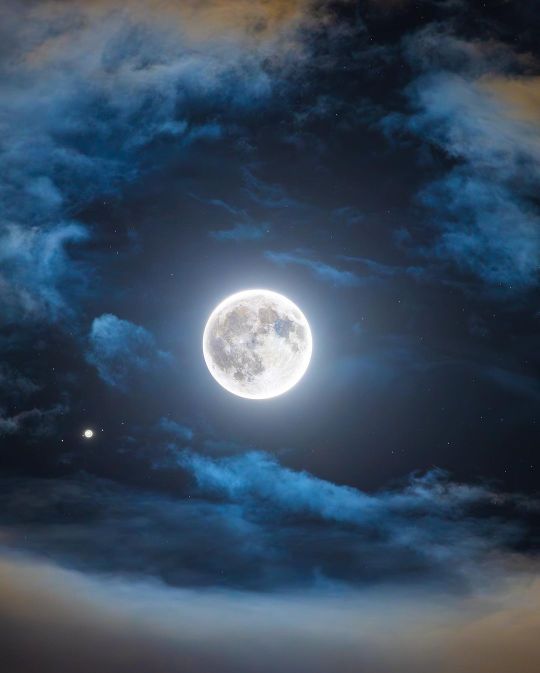
Full Hunter's Moon 2023 l Rami Ammoun
#moon#full moon#jupiter#planets#solar system#hunter's moon#october#astrophotography#astronomy#stars#night#space#galaxy#universe#sky
16K notes
·
View notes
Text
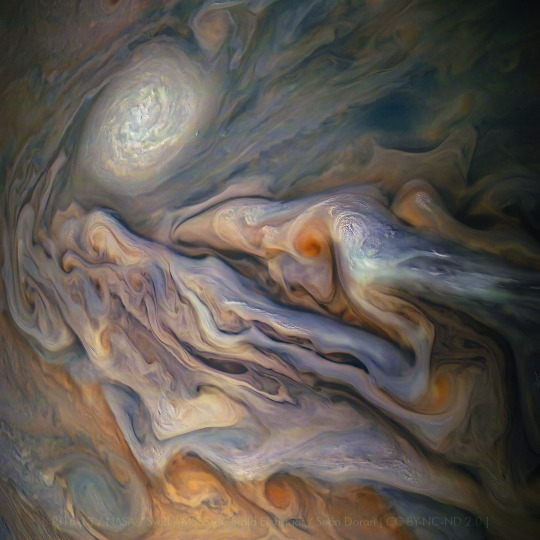
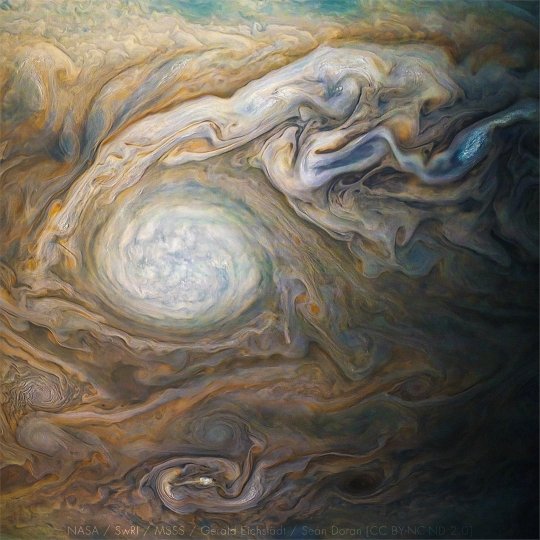


Let's take a look at Jupiter at 200mp quality

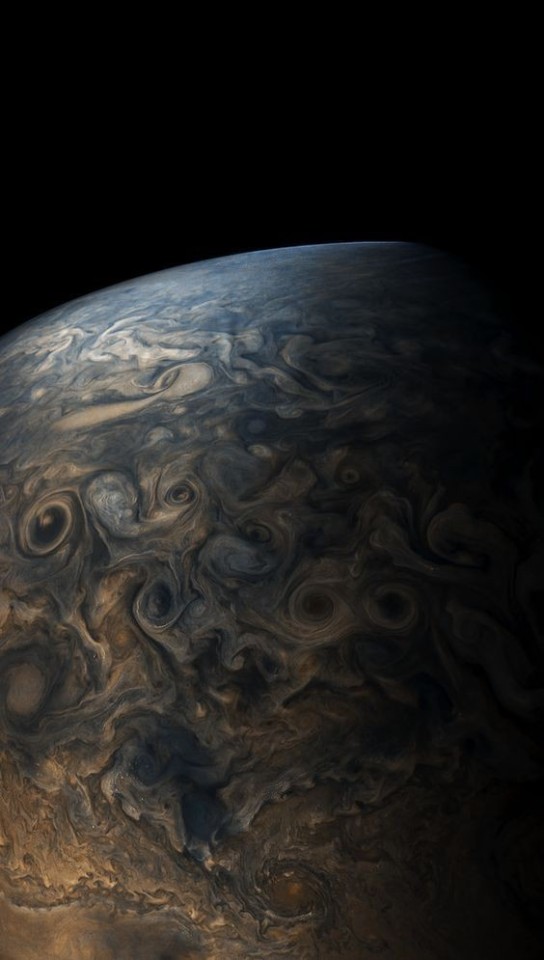


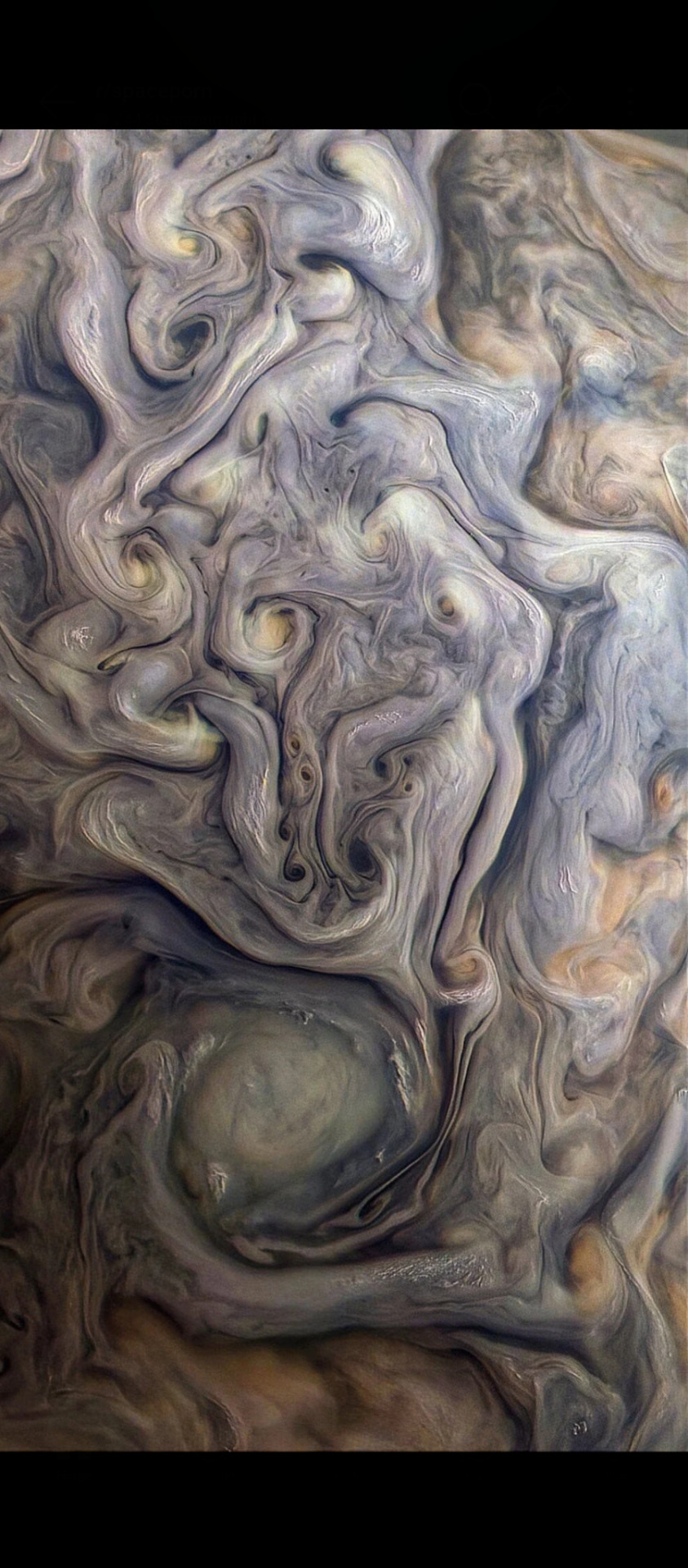
I uploaded a few more this Sunday morning
#jupiter planet#jupiter moon#jupiter#astrography#astronomers#astrophysics#astrophotography#astrology#astro observations#astro notes#astronomy#nasa picture of the day#nasa photos#nasa#nasawebb#our universe#universe#space station#space science#space exploration#outer space#space#hubble space telescope#goddard space flight center#spacecraft#james webb space telescope#james webb space technology#space photography#spaceporn
2K notes
·
View notes
Text





Sailor Moon Stars | Sailor Star Song
#sailor moon#sailormoonedit#sailor mercury#sailor venus#sailor mars#sailor jupiter#usagi tsukino#ami mizuno#minako aino#rei hino#makoto kino#mine: sm
7K notes
·
View notes
Text

🤬
16K notes
·
View notes
Text
Clipper is Set to Launch in October!

Icy moon, here we come!
Desktop version, also available in link below
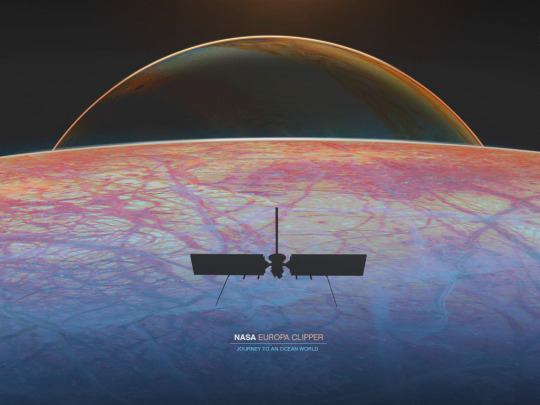
#Europa Clipper#clipper#nasa#best nasa mission#astronomy#exomoons#Europa#Jupiter moon#jovian moons#nasa art#science art
1 note
·
View note

